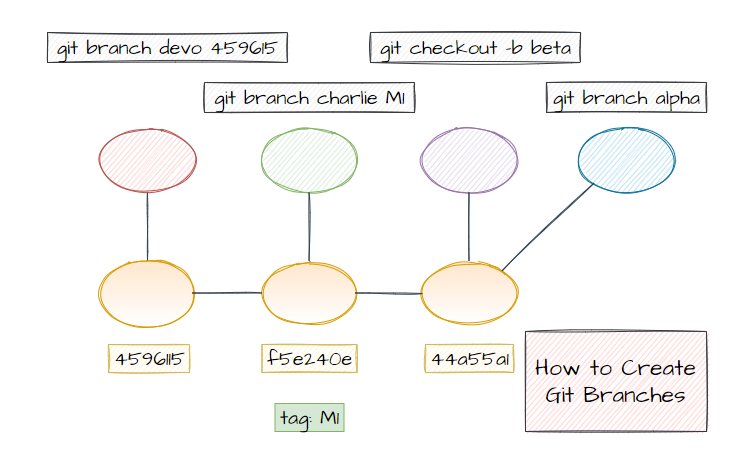

- Git create branch from current local branch update#
- Git create branch from current local branch code#
- Git create branch from current local branch windows#
And there's an endless amount of things you can do with them. We also talked about creating custom key bindings to be used as keyboard shortcuts to each.Branches are one of the core concepts in Git. Now, when I press Ctrl+B Ctrl+D I can choose which branch I want to delete and delete the branch very easily.ĭuring this post, we covered creating and deleting branches using Git and Visual Studio Code. I’ll choose the latter repeating the step to open the keyboard shortcut ( Ctrl+K Ctrl+S) window, searching for branch, and updating the Delete Branch command to use Ctrl+B Ctrl+D.
Git create branch from current local branch update#
Or, we can update VS Code’s keyboard shortcuts, as I mentioned above for creating new branches, to add a new key binding. We can either use the command git branch -d LOCAL_BRANCH_NAME replacing LOCAL_BRANCH_NAME with the name of the local branch. To delete local branches, there are two options. I prefer this method, but if I need to leave a branch around, I’ll resort to the command above. In Visual Studio Code, navigate to a terminal window, and run the following command:Īs I mentioned in a previous post, if you are using GitHub’s Pull Request feature, you can also delete the branch through GitHub’s user interface online. The easiest way to do this is by running a simple command. Second, we need to delete the local branches. Even when they are deleted on the remote server, using a fetch through VS Code, they are not deleted. First, we need to delete the pointers to the remote branches. There are two considerations when deleting branches. Deleting BranchesĪs of this post, deleting branches is not quite as elegant. Just note that your changes will be pushed to the branch you currently have checked out. You can continue to check items in and push your changes. You now have created your branch locally and published a copy of the branch, not your changes within your branch just yet, to the remote source control system. Click the ellipsis icon at the top to expand the menu and then click to Publish Branch. To create the new branch on the origin and add the remote link between your local branch and the branch at the origin, flip over to the Source Control ( Ctrl+Shift+G) window.
Git create branch from current local branch code#
However, your source code provider, such as GitHub, is still unaware of the new branch. You’ll now notice your new branch in the bottom, left-hand corner of the screen. Whichever method you choose above, you’ll be prompted to create a branch in VS Code through a dialogue like the following: I typically use Ctrl+B Ctrl+C for creating branches: Next, select the command and choose to add a keybinding. Next, search for branch until you have a filtered list:
Git create branch from current local branch windows#
You can also use the keyboard shortcut ( Ctrl+K Ctrl+S) in Windows to open the shortcut menu. You can do this by opening the Keyboard Shortcuts menu in File > Preferences > Keyboard Shortcuts in Windows or Code > Preferences > Keyboard Shortcuts in macOS. Or, you can create a new keybinding and map directly to the Create Branch action of Git. You can either click the branch in the lower, left-hand corner of the screen: Creating BranchesĬreating branches in Visual Studio Code (VS Code) is quite easy. I use this process frequently within GitHub when building my personal website. Using pull requests allows others, including virtual bots, to review your code and to ensure there are no build issues. When checking in code into source control, especially in a continuous integration and deployment process, it’s best to use pull requests.


 0 kommentar(er)
0 kommentar(er)
